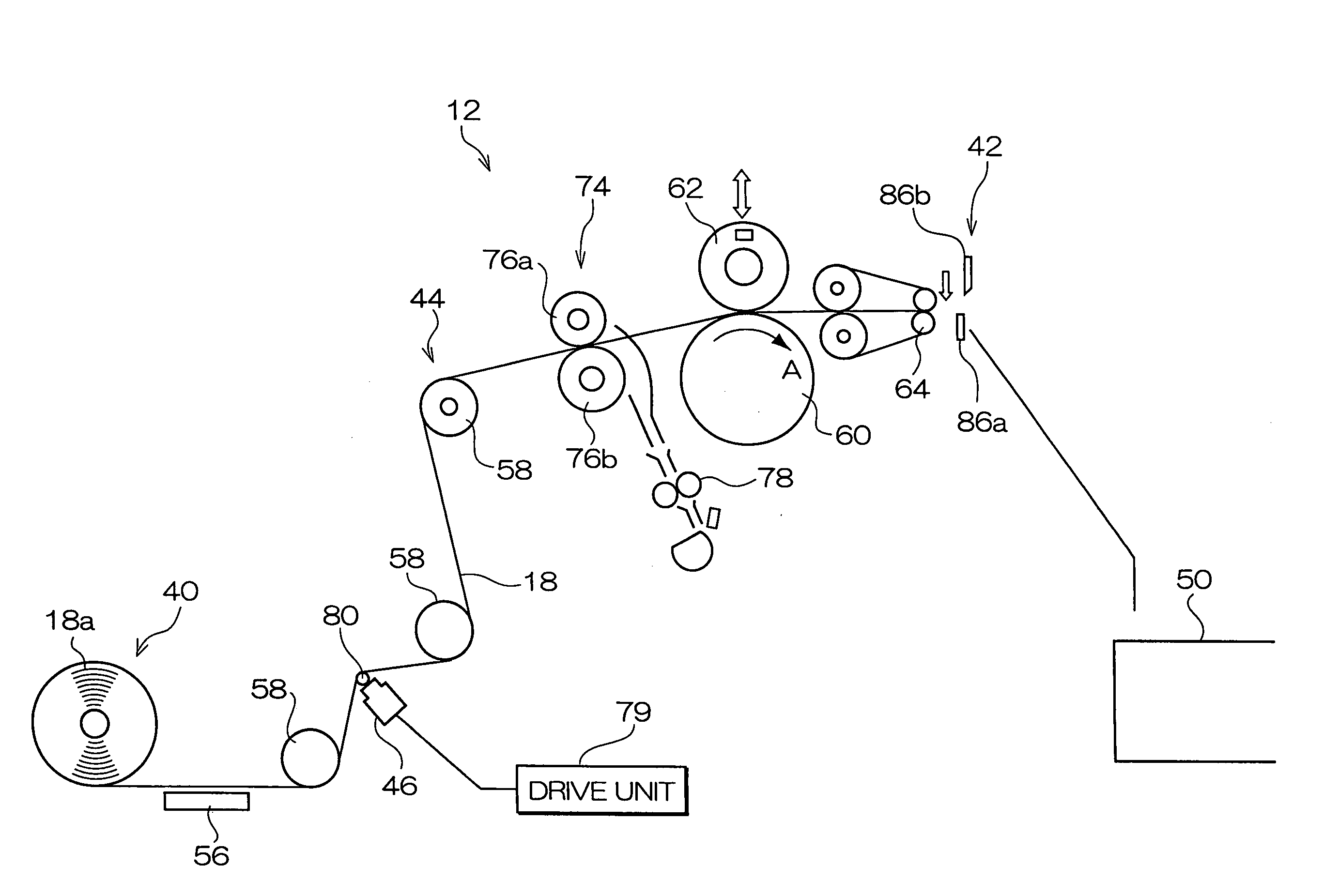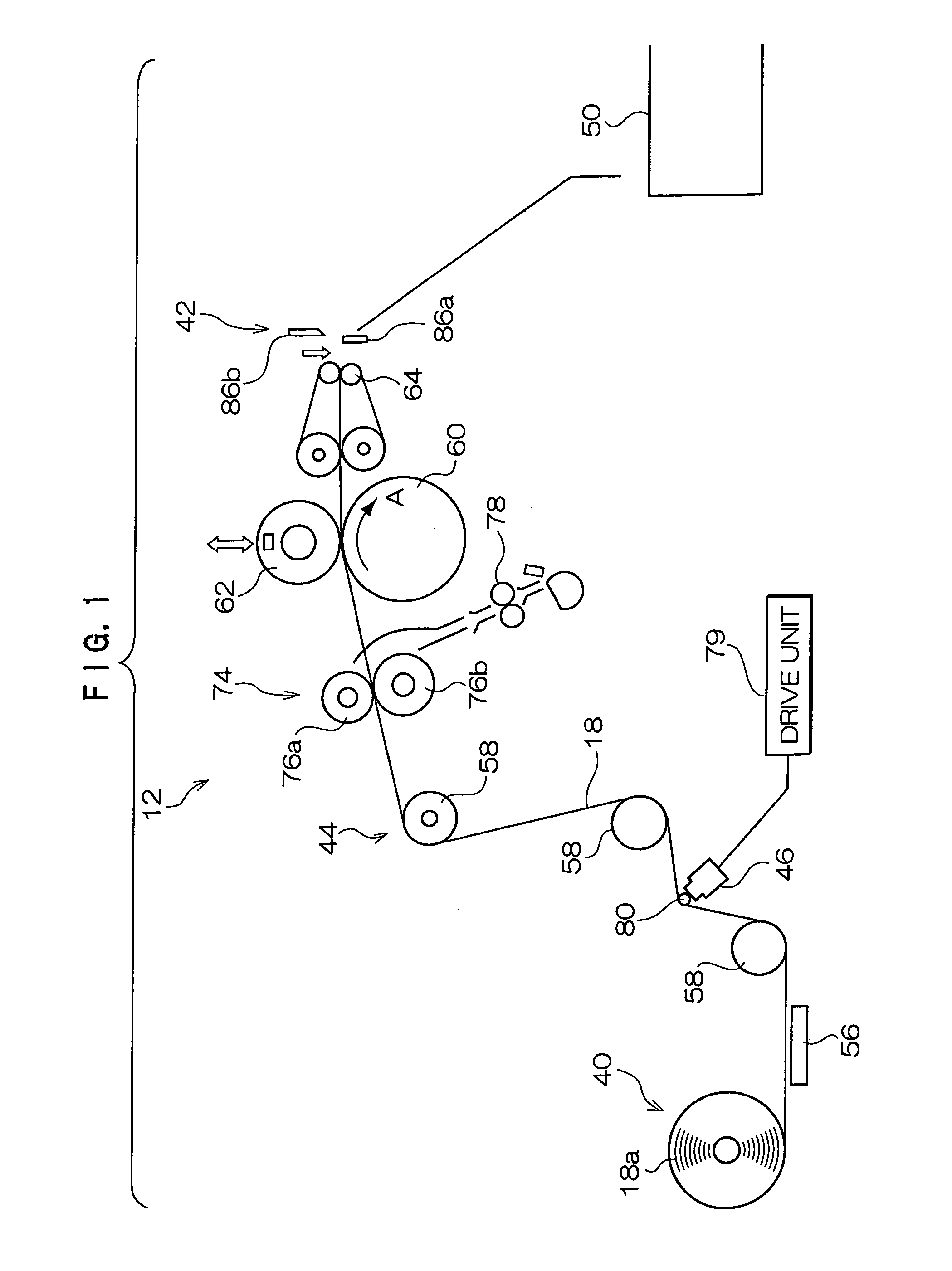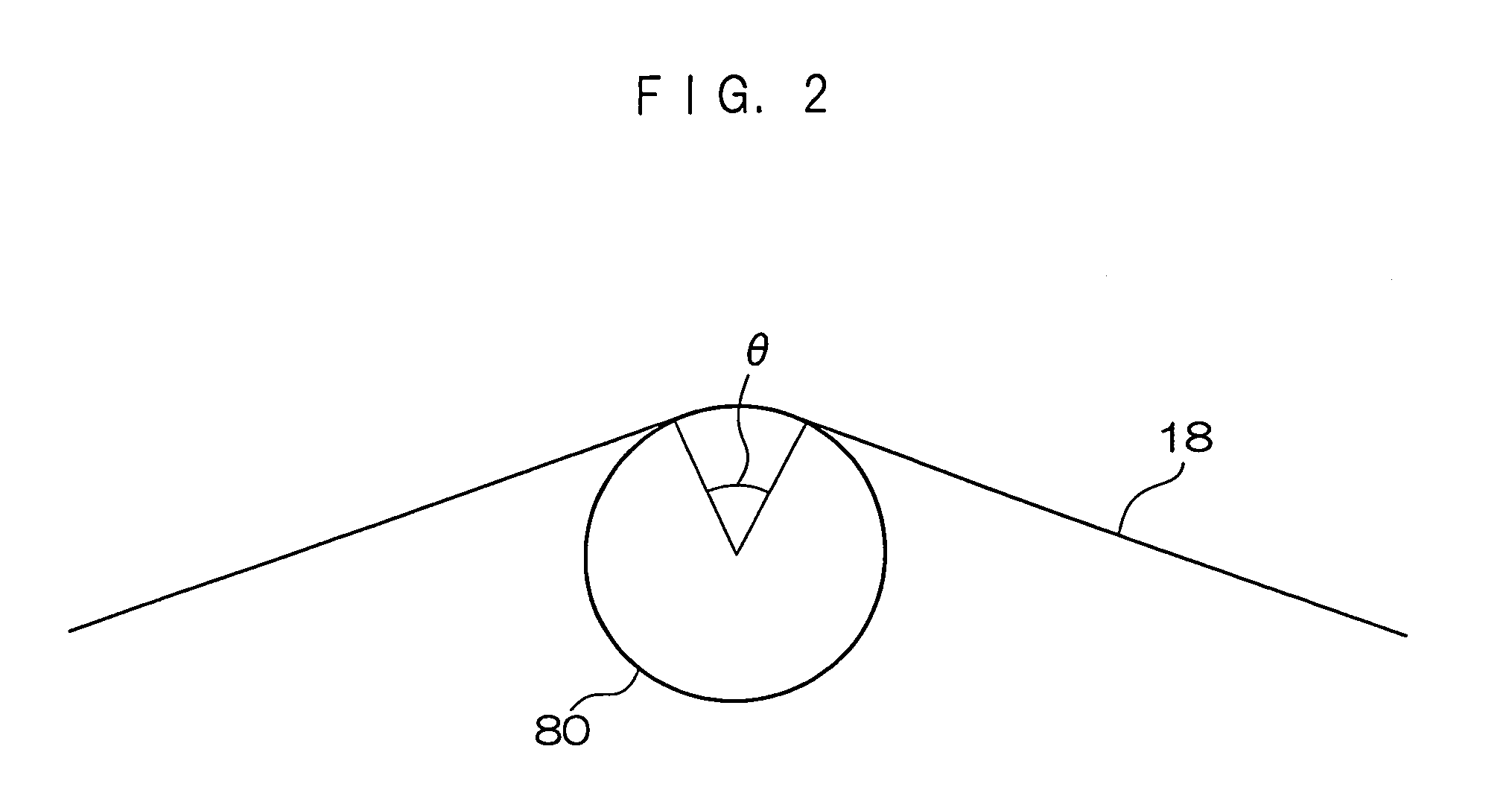Image recording medium manufacturing method
a technology of image recording medium and manufacturing method, which is applied in the direction of photosensitive materials, instruments, other domestic objects, etc., can solve the problems of poor feeding and skewing, poor glossiness, and inability to cure properly, so as to reduce ink bleeding, improve glossiness, and achieve sufficient curing
- Summary
- Abstract
- Description
- Claims
- Application Information
AI Technical Summary
Benefits of technology
Problems solved by technology
Method used
Image
Examples
example 1
Support Body Manufacture
[0201]50 parts of LBKP derived from acacia and 50 parts of LBKP derived from aspen are each processed by beating in a disc refiner until the Canadian freeness is 300 ml.
[0202]To the obtained pulp slurry is added, relative to the pulp, 1.3% of cationic starch (trade name:CATO 304L; manufactured by National Starch and Chemical Japan), 0.15% anionic polyacrylamide (trade name: DA 4104, manufactured by Seiko PMC Corporation), 0.29% alkyl ketene dimer (trade name: SIZEPINE K, manufactured by Arakawa Chemical Industries), 0.29% epoxidated behenic acid amide, and 0.32% polyamide-polyamine-epichlorohydrine (trade name:ARAFIX 100; manufactured by Arakawa Chemical Industries). Following that 0.12% of an anti-foaming agent is added.
[0203]The above prepared pulp slurry is then made into paper using a Fourdrinier paper machine, and in a drying process the felt surface of the web is pressed against a drum dryer via a dryer canvas, with the dryer canvas tension adjusted to ...
example 2
[0214]In Example 2 an inkjet recording sheet is obtained, produced in exactly the same way as the production of the inkjet recording sheet in Example 1, except in that a decurling bar 80 using a free roller of 8 mm diameter is used.
example 3
[0215]In Example 3 an inkjet recording sheet is obtained, produced in exactly the same way as the production of the inkjet recording sheet in Example 1, except in that a decurling bar 80 using a free roller of 16 mm diameter is used.
PUM
| Property | Measurement | Unit |
|---|---|---|
| diameter | aaaaa | aaaaa |
| diameter | aaaaa | aaaaa |
| wrap angle | aaaaa | aaaaa |
Abstract
Description
Claims
Application Information
 Login to View More
Login to View More - R&D
- Intellectual Property
- Life Sciences
- Materials
- Tech Scout
- Unparalleled Data Quality
- Higher Quality Content
- 60% Fewer Hallucinations
Browse by: Latest US Patents, China's latest patents, Technical Efficacy Thesaurus, Application Domain, Technology Topic, Popular Technical Reports.
© 2025 PatSnap. All rights reserved.Legal|Privacy policy|Modern Slavery Act Transparency Statement|Sitemap|About US| Contact US: help@patsnap.com



